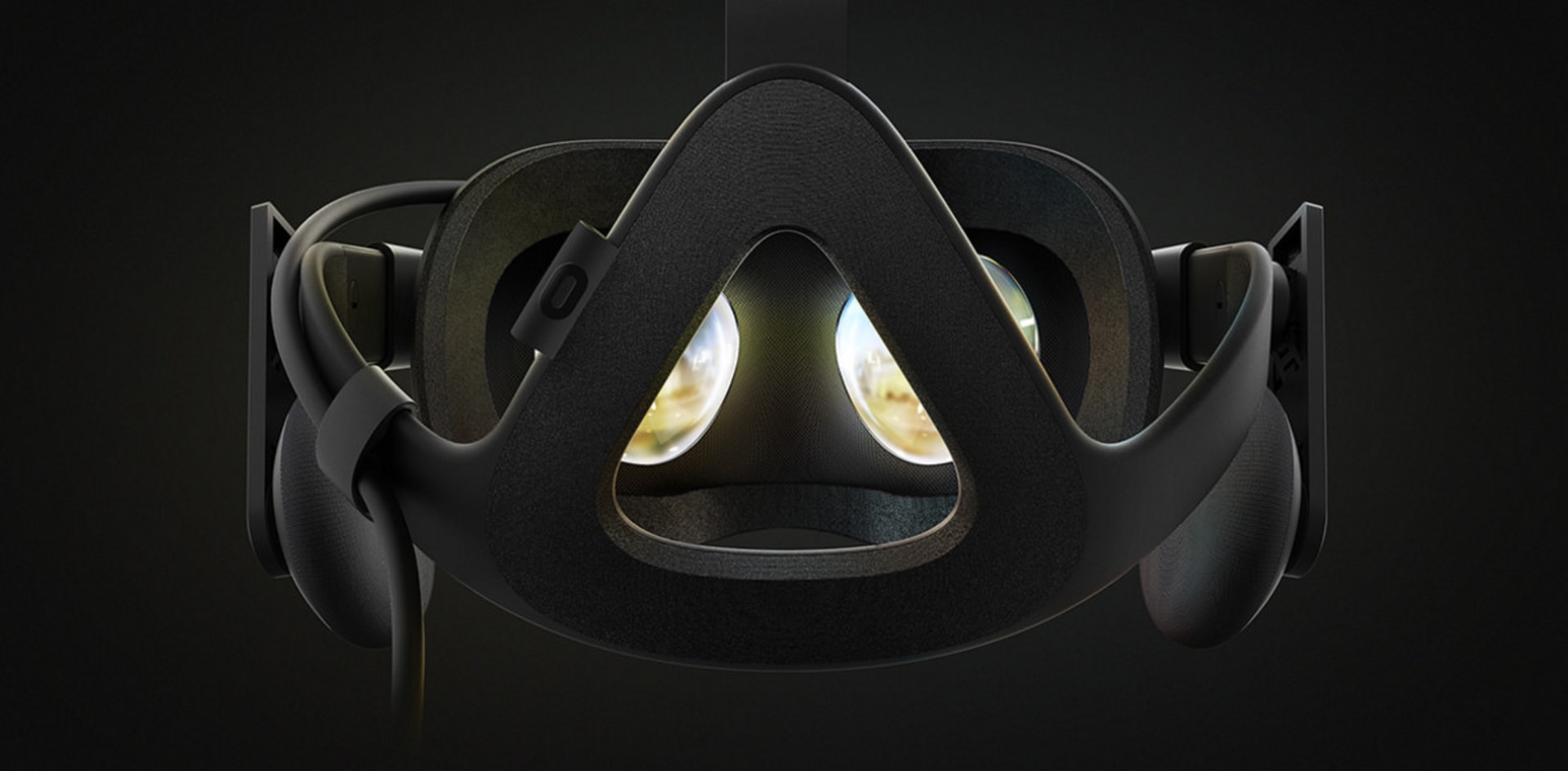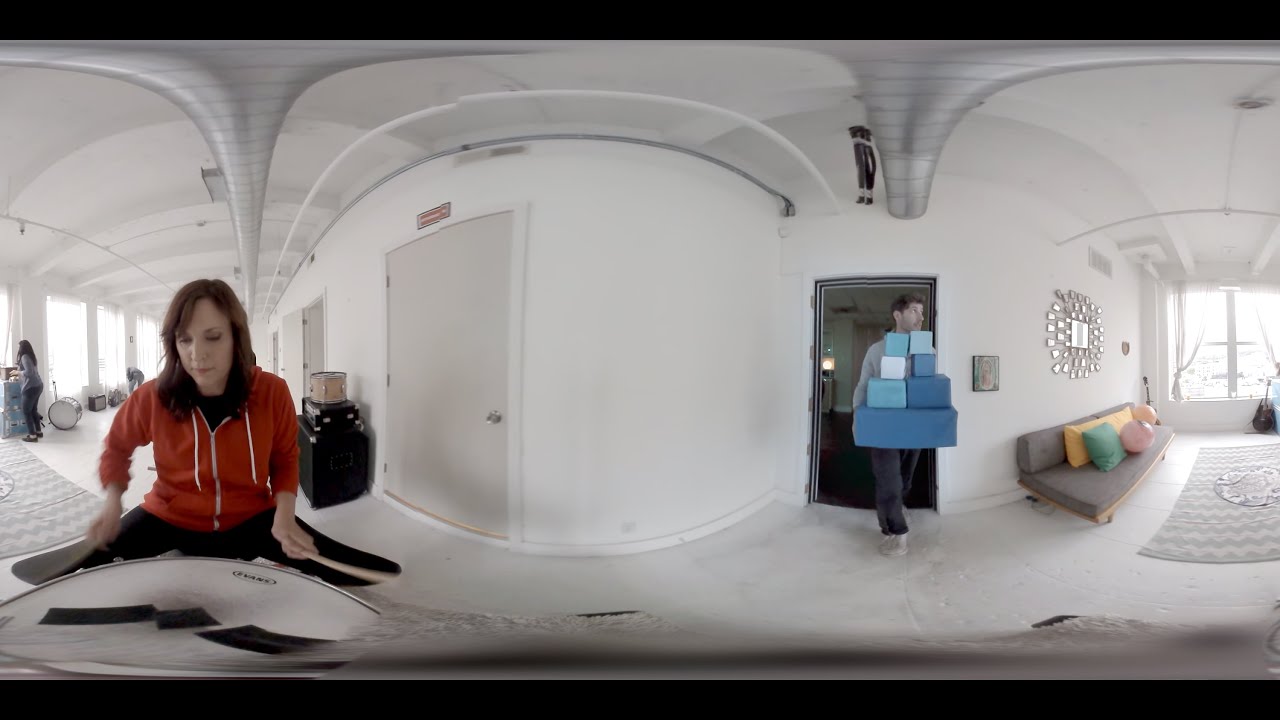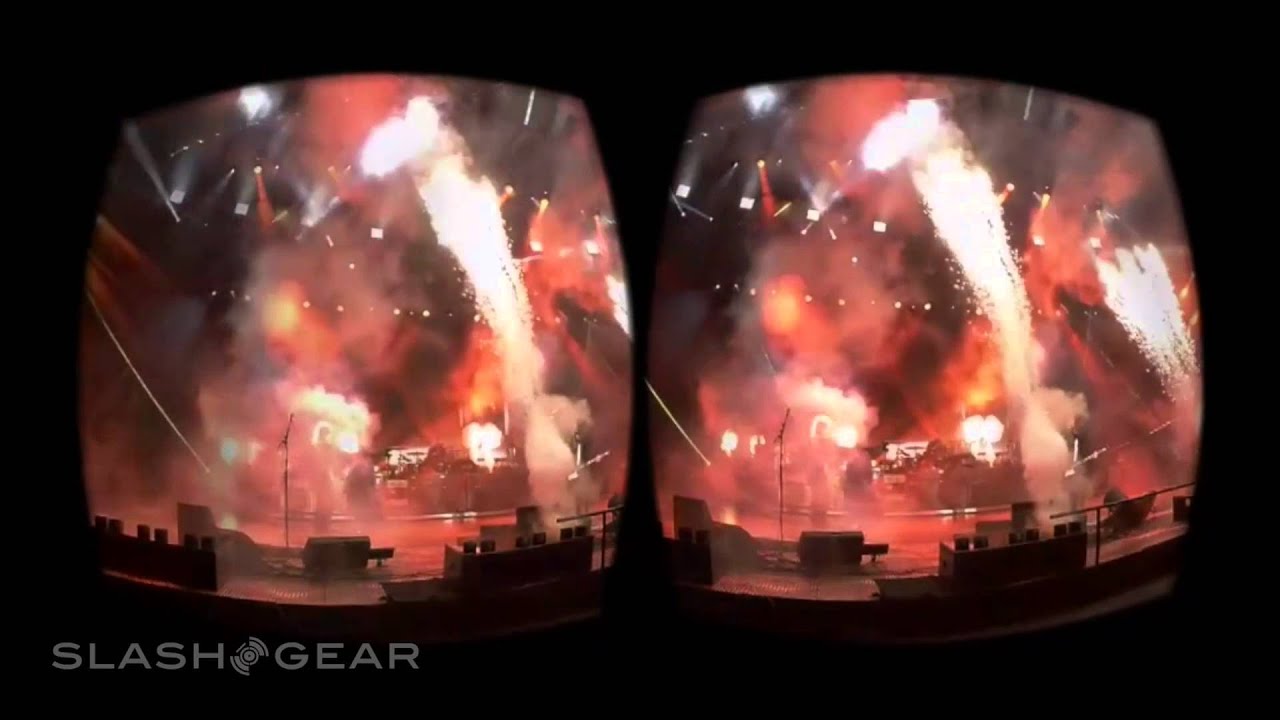
The Future Of Virtual Reality In The Music Business
This month, leading virtual reality technology company Oculus VR will begin shipping orders of Rift, the first headset aimed at consumer markets. Its release has critical implications for the entertainment and music industries, but it follows over half a decade of failed attempts and heated debate over virtual reality. The technology was first used in the 1960s for purposes of military training, and it wasn’t until the late 2000s that individual VR headsets began to take off. Today, the gaming industry is set up to be the primary benefactor of VR technology, as Goldman Sachs analysts predict $11.6 billion in annual revenues by 2025.
But the music industry offers VR an exciting home as well. Pop stars like Taylor Swift and Björk have released 360-degree music videos, holographic versions of Tupac and fictional Japanese idol and CTM 2016 star Hatsune Miku have appeared in concert, and that’s only the beginning. Universal Music Group is heavily integrating VR into concerts, and the app GrooVR creates immersive personal environments that respond to whatever you’re listening to. With all this in mind, we asked representatives from some of the leading companies applying virtual reality to the music business—including VRSE.Works and Specular Theory—to tell us what’s in store for the future.
Specular Theory
Since 2013, Specular Theory has collaborated with Fortune 500 companies, major film studios and independent film makers to produce innovative narratives in VR. They have also created a 360-degree music video for The Donnies The Amys.
Morris May, CEO: “When shooting our music videos, we spend a lot of time planning out where the viewer should look, and that’s a major factor in why some of our projects enable users to look anywhere and see anything. There’s a whole new level of complexity when you add editing to the mix, which makes 360-degree production completely different. Obviously the film crew can’t be in the shot, which requires hiding, so we rehearse quite a bit. Then I simply cross my fingers and hide under a table.”
Ryan Pulliam, CMO & Co-Founder: “The traditional tools and ways of thinking about storytelling simply don’t apply to VR. It’s is a whole new medium and language of storytelling that requires new tools, techniques, understandings and processes—creative and technical—for the way we tell stories. If what you’re trying to do can also be done in 2D, it probably won’t make for a great story in 360. We strive to let the storytelling drive the piece and adapt the approach to the given narrative. The story needs to be custom-tailored to the medium, so creators must approach the concept with a full 360-degree viewpoint in mind to enhance the story, not simply enlarge it.
In traditional media forms and at live events, there has always been a space between the audience and the content. When you strap a VR headset to someone’s face, they are immediately engaged and immersed in your story. We’re no longer spectating; we’re experiencing. Good content means allowing the viewer to feel truly transported by an experience, which comes down to attention to detail on all fronts: creative concept, resolution, audio and movement.”
Jaunt VR
Jaunt VR builds customized technology for VR and hosts content from their own app. They’ve collaborated with the likes of CBS, North Face, and ABC News, and have created 360-degree concert experiences apps for the likes of Paul McCartney, Jack White and Big Sean.
Miles Perkins, VP Marketing Communications: “VR journalism is a great platform for evoking empathy in viewers. When audiences are exposed to stories in a highly visual way, they often react completely differently than if they were reading words on paper. The same goes for VR and music. VR allows musicians to interact with their fans on a much more intimate level. It’ll be the “access all areas” ticket as users are taken backstage and walked through the entire experience. But while VR will change the way people interact with musicians and hopefully democratize these once exclusive experiences, it will not replace live events.
There are many challenges in filming VR. First, camera placement is essential. The best recordings make the audience feel like they are in a spot that they otherwise could never be in. The other challenge has to do with the wide range of lighting situations that need to be accounted for. We then need to capture 3D sound, and once that’s recorded with a tetrahedral microphone, we capture the board mix, which is also very important. These are the stems that will be used by the sound engineer to produce an ambisonic mix that makes the audience feel like they are right there on stage with the sound from the musicians and audience right where they should be.
VR is still very young, so it’s hard to pinpoint what type of effect it will have on the music industry in the long-term, but the hope is that VR will grow alongside it. We’re only just now scratching the surface of the potential for VR. We see this technology and content advancing in ways that will make these experiences even more interactive and personal than they are today.”
Inition
Click on the button to load the content from fast.wistia.net.
Inition is a production company that specializes in the development of immersive, installation-based experiences. They’ve produced VR experiences for over a decade and recently worked with the Philharmonia Orchestra at The Royal Festival Hall.
Adrian Leu, CEO: “At Inition we’re exploring ways to create multi-sensory VR experiences that include smells, tactile sensations, mobility and walking. We’ve done a project with the London Philharmonia Orchestra that allows users to experience one of their concerts and the preparation that goes into the final product. It was filmed in 360/3D with 3D binaural sound, [an audio recording method that emulates the human hearing experience to enable 3D playback] and that offers a short narrative of the experience. Watching a concert on a flat, 2D screen is one way to participate, but virtual reality produces a more empathetic experience. And that’s the key word; it’s not only about listening or seeing—although both of those are part of it. It’s about experiencing, which is much more than that.
Projects like ours also look at the different ways in which such concerts can be recorded. In the future, this could be used to broadcast live from concerts with new cameras on the market and the increasing possibility of ‘stitching’ different angles on the fly. There’s no reason why we won’t be able to go to Ticketmaster or any other online ticket shop and buy a ‘virtual ticket’ for a concert, a sports event or theater performance.
Inition captures sound with a set of bespoke binaural microphones so that the viewer can feel the audio move around them as they turn their head. There are a lot of developments going on in spatial audio, like the Fraunhofer Institut’s Cingo, which renders stereo, surround and immersive sound over headphones. Or the developments coming from the Dolby Laboratories, Atmos, which treats sound like positional, 3D objects so that they can be heard not only in front, behind and at the sides, but also above users.
One technological area of interest is ‘remote presence,’ which VR does well, and so we could see glove technology being applied for DJing. I’ve also heard of augmented reality DJ scratching, where a marker is attached to the vinyl and the ‘virtual scratching’ is done using a camera. On the consumer front, Facebook and YouTube have opened their platforms for 360-degree videos, which is a first step towards the democratization of this type of content. As for content generation, we need to develop tools that can enhance the creation of content for VR to prosper. Demand and markets will create the opportunity for creating high quality content, and the evolution of the technology will facilitate this revolution in content consumption.
Looking at the general impact technology has had on the music industry, to some extent, it was transformed—others would say ‘killed’—by streaming. But it has also opened real opportunities for a lot of talents who otherwise would not have been able to access the market. VR could have a negative impact on the industry by promoting sub-quality content that doesn’t impress people.”
apelab
Apelab is a production studio based in Geneva and Los Angeles that creates interactive stories and games in virtual and augmented reality. They’ve worked on the first spatial story for any VR device that uses Gaze, a technology that triggers narratives based on the viewer’s eyesight.
Emilie Joly, CEO and Co-Founder: The ability to experience music with your whole body has the potential to make a huge impact on the music industry. Record companies could also make a huge impact if they start releasing albums or music videos only for VR—but that would involve completely rethinking how that kind of content is made. I can see VR being used as a marketing tool, but I think it can go way beyond that if companies are willing to take the risk.
VR can introduce the ability to communicate with fans in an immersive way and propose new ways of consuming music by creating videos that mix live sessions with CGI animation and interactivity. You need to think of what it means to put someone literally inside the video. How do they interact? What do they feel? I think that being able to see behind the scenes in VR can be really interesting.
However, a live show and a virtual reality experience are very different things, and in my opinion, VR will never replace a live concert. I think the revolution lies in creating a new way to experience music—not trying to replace something that’s already great. Blu-ray discs will inevitably render DVDs obsolete because they’re essentially the same medium, but virtual reality is different than any other before it, so I don’t think VR will make any other media obsolete. Don’t see virtual reality as new music videos; see them as something new. It’s not video. We really need to find a new term, but I don’t know what yet.
Vrse.works
Click on the button to load the content from cache.vevo.com.
Vrse.works is a specialist VR production company with a team of highly experienced directors, including Spike Jonze, who create and disseminate VR content. They’ve created 360-degree music videos for the likes of Muse and U2.
Patrick Milling Smith, President and Co-Founder: Vrse.works aims to tell the best and most captivating stories in VR using the most creative minds and talent available. As a collective of artists, technicians, thinkers and innovators, we’re incredibly excited by the opportunities afforded by the rapid technological advances in VR and how we can utilize and adapt them most effectively to meet our ambitions. VR is the apex of a technological and artistic revolution, but it’s still very much in its infancy. Being a creator/director-led company means that the challenges in VR filmmaking become even greater due to the uncompromising nature of our directors and the stories they want to tell. We learn from every shoot, push boundaries and create and develop the language for an entirely new medium.
I think this technology could welcome back the glory days of the music video. Used correctly, this is a chance to properly share the creativity and imagination that the musician represents or another artist has instinctively conveyed from listening to the music. Users are totally immersed in this medium, and that’s pretty powerful. If you use it to make people feel something, then you’ve created an impression and a memory. That’s compelling for any marketer. Hopefully brands will realize the best way to connect with their audience, is to help people feel something and give us exciting and rewarding brand experiences rather than adverts.
Armando Kirwin, Head of Post Production and Executive Producer: Squarepusher’s “Stor Eiglass” music video, which was released on VRSE, presents a completely computer-generated world. Whether complex photorealistic renders or highly-stylized 2D animation, these videos definitely take more time to make compared to shooting with a live-action VR camera. The advantage to the all-digital workflow is that you have total control of the full 360-degree environment. You can choose to craft worlds and situations that would be almost impossible to shoot in reality. This is really important for music-based pieces because it allows the director to craft something that’s as abstract, emotional, and fantastic as the music itself.
Published March 30, 2016.



